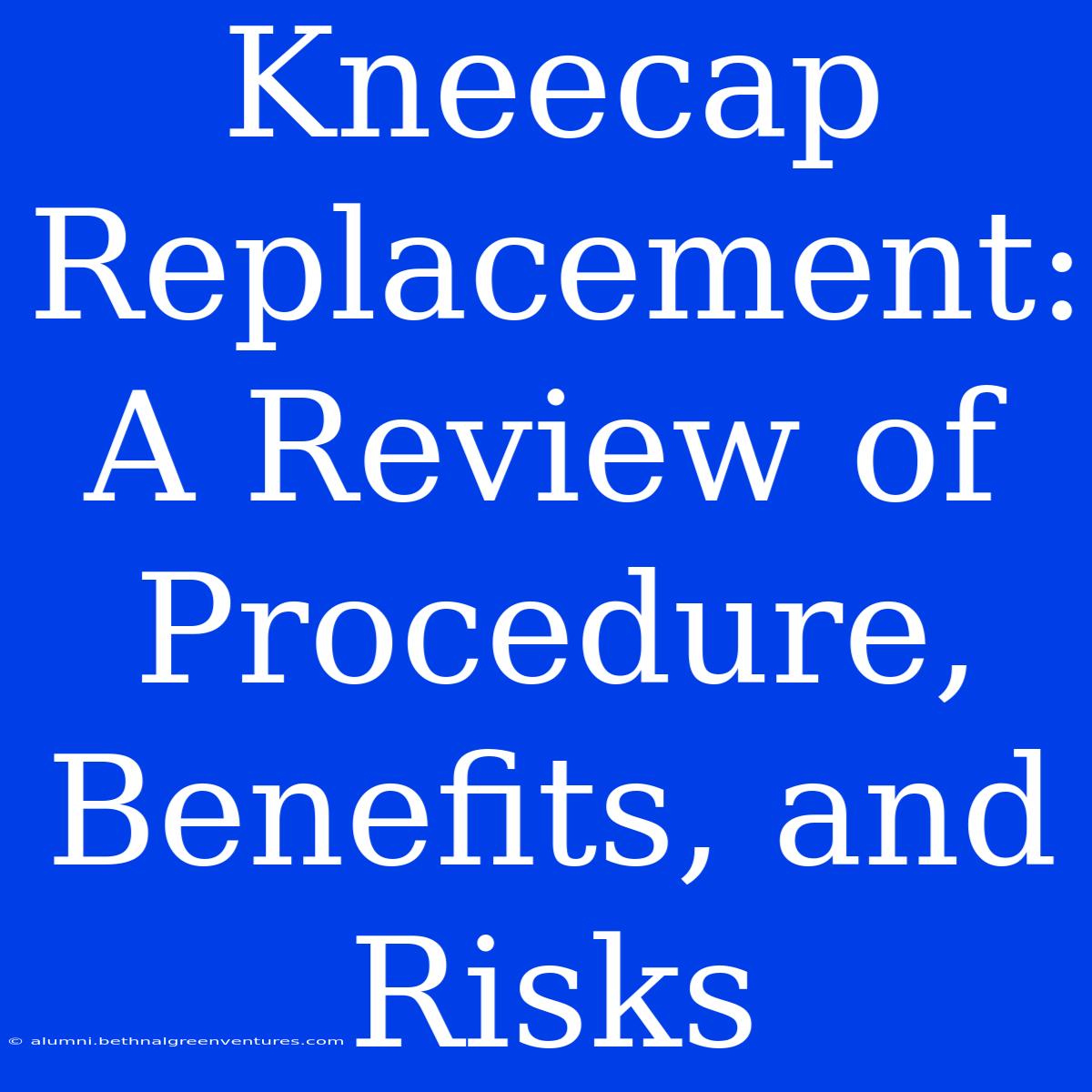Kneecap Replacement: A Review of Procedure, Benefits, and Risks
Is knee pain a constant companion, limiting your mobility and quality of life? Knee replacement surgery might be a viable option to restore your functionality and ease discomfort. Editor Note: This article aims to provide a comprehensive overview of knee replacement surgery, detailing its procedure, benefits, and risks. It is crucial to consult with a qualified healthcare professional for individual medical advice.
This topic is important because knee pain can significantly impact daily activities, from walking and climbing stairs to enjoying hobbies and spending time with loved ones. Understanding the details of knee replacement surgery, including its potential benefits and risks, can empower individuals to make informed decisions about their treatment options.
Our research involves reviewing medical literature, consulting with orthopedic surgeons, and analyzing patient experiences to create a clear and informative guide to knee replacement. We aim to equip you with the knowledge to discuss this procedure effectively with your doctor and navigate the decision-making process with confidence.
Key takeaways from our review:
| Aspect | Description |
|---|---|
| Procedure | Involves removing damaged cartilage and bone and replacing them with an artificial joint. |
| Benefits | Reduced pain, improved mobility, increased functionality, and enhanced quality of life. |
| Risks | Infection, blood clots, implant loosening, and nerve damage. |
| Recovery | Gradual process involving physical therapy and rehabilitation. |
| Cost | Can vary based on individual factors and insurance coverage. |
Knee Replacement: A Deeper Look
Knee Replacement Procedure
Knee replacement surgery involves a complex process that begins with the removal of damaged cartilage and bone from the knee joint. An artificial joint, typically made of metal and plastic, is then implanted to replace the damaged components. The procedure typically takes 1-2 hours and is performed under general anesthesia.
Key Aspects
- Pre-operative Evaluation: A comprehensive evaluation assesses overall health, joint condition, and suitability for surgery.
- Surgical Technique: Various techniques exist, including total knee replacement and partial knee replacement, with the chosen method depending on the extent of damage.
- Post-operative Recovery: This is a gradual process that involves physical therapy to regain strength, flexibility, and mobility.
Benefits of Knee Replacement
- Pain Relief: The surgery eliminates pain caused by damaged cartilage and bone, significantly improving comfort levels.
- Improved Mobility: The artificial joint allows for smoother movement, enabling activities like walking, climbing stairs, and bending.
- Increased Functionality: It restores the ability to perform daily tasks and participate in desired activities, enhancing overall quality of life.
Risks of Knee Replacement
- Infection: A potential risk, but antibiotics and meticulous surgical techniques help minimize this.
- Blood Clots: A risk that requires careful monitoring and preventative measures like blood thinners.
- Implant Loosening: While rare, it can occur over time and may necessitate revision surgery.
- Nerve Damage: A possible complication, though it usually resolves on its own or with treatment.
FAQ: Knee Replacement
- Who is a candidate for knee replacement? Individuals with severe knee pain, limited mobility, and significant joint deterioration.
- What are the alternative treatments to knee replacement? Physical therapy, medication, injections, and braces can be used to manage knee pain.
- How long does knee replacement surgery take? The procedure itself typically lasts 1-2 hours.
- How long is the recovery period for knee replacement? It varies but can take several months to fully recover.
- What kind of physical therapy is involved? Exercises to improve range of motion, strength, and balance.
- How long does a knee replacement last? The lifespan of a knee replacement varies, but it can last for 10-20 years or even longer.
Tips for Knee Replacement Recovery
- Follow your surgeon's instructions closely. This includes medication, physical therapy, and weight-bearing restrictions.
- Engage in physical therapy consistently. It is essential to regain strength and flexibility.
- Listen to your body and take breaks when needed. Avoid overexertion and gradually increase activity levels.
- Maintain a healthy weight. This can reduce strain on your knee joint.
- Stay hydrated. Water helps lubricate joints and aid in the healing process.
- Talk to your doctor about any concerns. They can address your questions and provide individualized guidance.
Closing Thoughts
Knee replacement surgery can offer a life-changing solution for individuals experiencing debilitating knee pain. By understanding the procedure, benefits, risks, and recovery process, patients can make informed decisions and navigate this path with confidence. Remember, this information should be used as a guide for discussion with your healthcare provider, who can provide individualized advice tailored to your unique situation.
